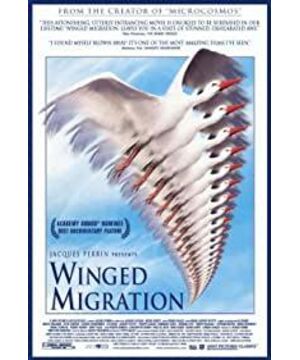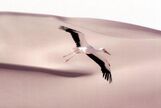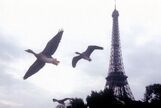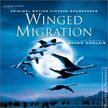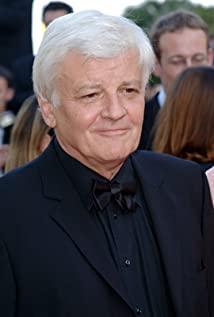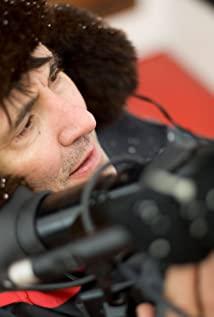——A small comment on the French documentary "The great flying"
"The great flying", which has been translated as "The Migration of Birds" in many places, including the version I watched. But personally I prefer it to be translated as "The Great Migration". "Flying is not something that can be solved by physical strength and intelligence, it is a miracle." A poet said so. The migration of birds is really great, and after two years of data collection and three years of filming, French director Jacques Behan used a high-tech aerial shooting system to film, to follow the feat of migratory birds from south to north, and to lead the audience to experience migratory birds. The arduous process of "relocating" is also great and worthy of our respect. The documentary itself and the protagonists of the documentary, the birds, are flying in our hearts for a long time.
The protagonists of the whole article are birds, all kinds of migratory birds all over the world that need to "relocate": red-crowned cranes in Asia, bald eagles in America, gray-tailed geese in Europe, red-breasted geese in Eastern Europe, and penguins in Antarctica. The migratory birds are flying in groups, changing in various queues, seemingly leisurely and actually flying nervously, toward their destination, toward the home of some of their companions, but they can never reach. They flew over the Eiffel Tower, over the Statue of Liberty, over the Grand Canyon of the United States, over the Great Wall, over the pastures of England and the rainforests of South America, and the aircraft carrier in the sea... Flying thousands of kilometers to a The place breeds the next generation, and then they fly back to the original place in groups, with their homes on both sides. Every flight is a journey home, although some members will never return home. Every life, whether beautiful or ugly, strong or weak, has to face the challenges and tests of life, and no one can escape it. In the face of persistent hardships, perseverance. Even if he ends his life halfway, it is the will of nature and there is no complaint. Those who survive, still have to continue to live, still have to persevere, enjoy the beautiful moments of life in perseverance, and sing indulgently when they are happy.
I saw the bald eagles fighting with the avalanches one after another, unrelenting; the gray-tailed geese plunged their heads into the lake again and again, looking for fish in the water; the clumsy penguins were not afraid of their babies. Why bother biting by the much stronger sea crows; red-crowned cranes wading among the waterweeds of the swamp with slender legs; straggling migratory birds wandering alone in the dark night. I see them fighting against nature for survival. Time and time again, the meaning and value of life's existence is to fight against invincible nature, and then, to survive, is like a reincarnation. The film opens by saying that bird migration is a story about commitment. For the promise of returning home, they fought an arduous struggle against nature and the irresistible power of their little bodies, and in this struggle they felt the joy of victory. Everything that the film showed in front of my eyes, everything about nature, moved me deeply.
I saw the grey-tailed geese get rid of the shackles of the rope with the help of the little boy and fly into the sky again, but the rope ends are still wrapped around their feet to show off in the wind; migratory birds are wading in the industrially polluted hot water, covered in mud Walking hard, just for the dream of that home; Amazon parrots cleverly open their cages to regain their freedom and those sad eyes in the cages; migratory birds in cages watch their companions fly through the sky and whine. In the sound of the gunshots, the poor birds fell like broken weights... I saw the greedy eyes of human beings, saw their bloody hands, and finally had to close their eyes with difficulty. I think of the bloody hides of Tibetan antelopes and the corpses scattered all over the mountains and plains in "Hoh Xil", of the South China tigers in the zoo pacing the cage sluggishly after losing their tiger power, and of wild elephants who lost their tusks stroking their mutilated ones in the mud Wounds, remembering the long whining of the kangaroos who lost their mothers, what role do humans play in nature? Killing animals and destroying the environment on which they live. The number of koalas in Australia has plummeted because of the massive deforestation of eucalyptus trees. Few birds fly in the gray sky. Are they all crying on tree stumps?
A long time ago, people also hunted animals and cut down trees. They fought with nature with their own hands, and fought for survival just like animals. But now, people wear animal furs not for heating but for enjoyment. People build all kinds of high-rise buildings not to shelter from the wind and rain, but to speculate on housing prices... Greedy people are already on the road of destroying nature. The farther away, when will people's hearts return to the most primitive and warmest time? When can human hearts migrate back to their original homeland?
View more about Winged Migration reviews


